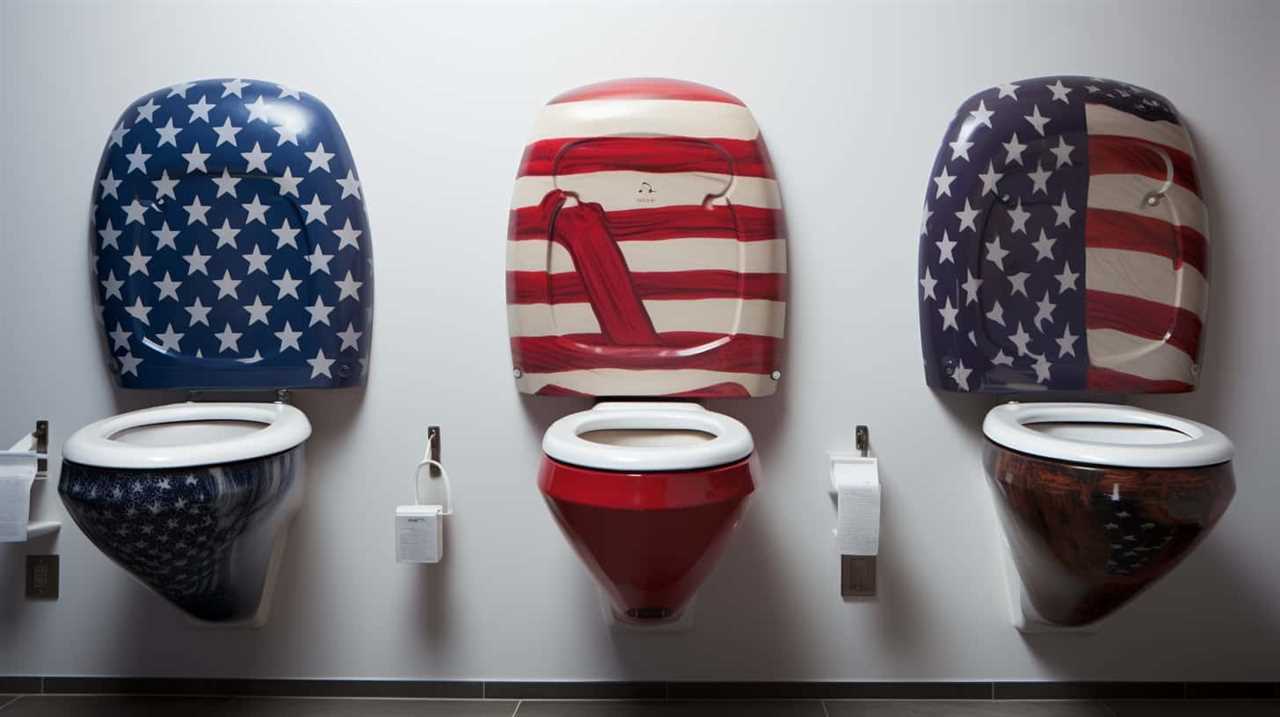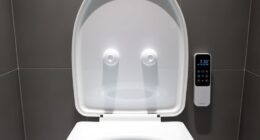So, you find yourself in a rather ironic situation – the water is off, but you really, really need to flush the toilet. Don’t worry, we’ve got you covered.
In this article, we’ll delve into the world of flushing toilets without water, exploring alternative methods and precautions to take. Whether you’re facing a temporary water shut-off or just want to be prepared for any situation, read on to learn how to tackle this seemingly impossible task.
Key Takeaways
- Water shut-off prevents toilet flushing, making a backup plan necessary during water outages.
- Alternative methods for flushing the toilet without water include using a bucket or pitcher to pour water into the bowl and creating flushing force.
- Precautions should be taken before attempting to flush without water, such as wearing gloves, sanitizing tools, and ensuring the safety and effectiveness of the flushing process.
- It is important to avoid common mistakes when flushing without water, such as prioritizing hygiene, using disposable gloves, and avoiding direct contact with waste to prevent infection.
Understanding the Water Shut-off Situation
You can’t flush the toilet when the water’s off. Understanding the water shut-off situation is crucial during water outages and plumbing emergencies.
When the water supply is interrupted due to maintenance or unforeseen circumstances, it is essential to know how to handle such situations. During a water outage, the flushing mechanism in your toilet relies on the availability of water to remove waste. Without water, the flushing action simply cannot occur.
It is important to remember that attempting to flush the toilet without water can lead to clogs or damage to the plumbing system. In such situations, it is advisable to have a backup plan, such as using a bucket of water to manually flush the toilet until the water supply is restored.
Alternative Methods for Flushing the Toilet
If the water is not available, try using a bucket of liquid to help empty the toilet bowl.
When faced with a situation where the water supply is temporarily cut off, you can still flush your toilet using household items and some DIY methods to create a temporary water supply.
One option is to fill a large bucket with water from an alternative source, such as a nearby stream or rainwater collection system. Carefully pour the water into the toilet bowl, aiming for the center to create enough force to flush the waste away.
Another method is to use a pitcher or jug to pour water directly into the bowl. Repeat this process until the bowl is empty.
Remember to conserve water and use it sparingly until the water supply is restored.
Precautions to Take Before Attempting to Flush
Before attempting to flush, make sure to take necessary precautions to ensure the safety and effectiveness of the process.
In emergency situations where the water supply is cut off, there are DIY hacks you can try to flush your toilet. However, it is essential to be cautious when implementing these emergency solutions.
First, make sure to wear gloves to protect yourself from any potential contaminants.
Next, consider using a bucket of water to manually flush the toilet. Fill the bucket with water and pour it directly into the bowl, aiming for the drain. This should create enough force to flush the waste away.
Additionally, you can try using a plunger to create pressure and force the water through the drain.
Remember to sanitize any tools or equipment used in the process to maintain hygiene.
Common Mistakes to Avoid When Flushing Without Water
One common mistake to avoid when flushing without water is forgetting to wear gloves for protection. When faced with a toilet flush without water, it’s important to remember that hygiene should still be a priority. Without water, bacteria and germs can easily spread, making gloves essential for preventing contamination.
In emergency toilet solutions, such as using plastic bags or buckets, it’s crucial to protect your hands from coming into direct contact with waste. Gloves provide a barrier, reducing the risk of infection and promoting proper sanitation. Ensure that the gloves you choose are durable and disposable, allowing for easy disposal after use.
Seeking Professional Help: When to Call a Plumber
When facing plumbing issues, it’s important to know when to call a plumber for professional assistance. While DIY plumbing fixes can be effective in certain situations, there are times when it’s best to leave it to the experts.
Here are four instances when you should consider seeking professional help:
-
Emergency situations: If you’re dealing with a burst pipe, a major leak, or a sewage backup, it’s crucial to call a plumber immediately. These situations can cause extensive damage and require specialized knowledge and equipment to fix.
-
Complex plumbing projects: If you’re planning a bathroom or kitchen remodel that involves extensive plumbing work, it’s wise to consult a professional. They can ensure that everything is installed correctly and up to code.
-
Persistent plumbing problems: If you’ve attempted DIY fixes but the problem keeps recurring, it’s a sign that there may be an underlying issue. A plumber can identify and address the root cause to prevent future problems.
-
Lack of experience or knowledge: If you’re unsure about how to tackle a plumbing issue or lack the necessary skills, it’s best to call a professional. Attempting complex repairs without the proper expertise can lead to further damage and costly repairs.
Conclusion
In conclusion, when faced with a water shut-off situation, it’s important to remember that you can still flush the toilet using alternative methods. By pouring a bucket of water into the bowl, you can create enough pressure to flush away waste.
However, it’s crucial to take precautions such as wearing gloves and avoiding excessive pouring to prevent any mess or damage.
If you encounter any difficulties or are unsure, it’s advisable to seek professional help from a plumber who can provide expert assistance.










